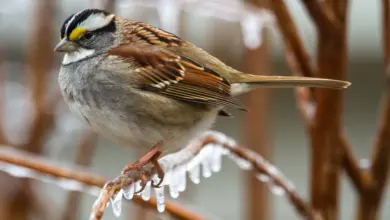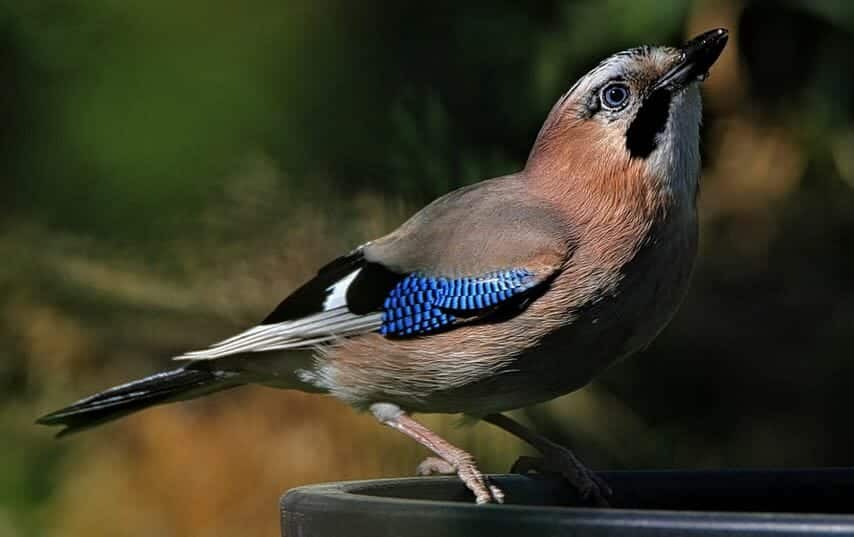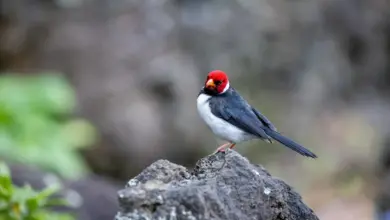The Raising of two Senegal Dove Chicks
The Raising of two Senegal Dove Chicks
By David Pentecost
Senegal / Laughing Dove Species Information Page
May 2013, Limassol, Cyprus. A pair of doves had for a few weeks been visiting my second-floor apartment verandah occasionally, the female trying to find a suitable spot for a nest, but not being satisfied with any site.
26th May. Finally, she settled high on a bougainvillea bush which grows up the trellis at one end of the verandah. The male was busy collecting small twigs and having some difficulty trying to break some off the bush. I helped by breaking off a few and putting them on the ground, from where the male picked them up. He passed them beak to beak to the female, who tucked each one beneath her feet and pressed them into position. The nest was completed on 27th May, and since that date, the nest nearly always had one bird sitting on it – one at night, the other during the day, so I assumed that there was at least one egg in the nest, but I could not see down into it.
29th May. I noticed that the nest was unoccupied, and I feared that the birds had given up and moved elsewhere. Quickly I put up a ladder and looked into the nest, and saw two white eggs. Unfortunately, I didn’t have my camera with me. I quickly removed the ladder for fear of scaring the birds away. Shortly after, one of them returned to the nest and resumed incubation.
I started to put out some seeds and breadcrumbs on the verandah floor, and a bowl of water, and changed the water daily. Only once did I notice the bird on the nest leave it briefly, to feed or drink, but the other one fed several times each day, otherwise spending most of the time away from the apartment. At night, only one bird was present – on the nest – the other one sleeping elsewhere.
30th May – 12th June. On 8th June [I observed one parent] taking over incubation from the [other. Occasionally one of the birds would come during the day, just to sit next to the incubating bird for five or ten minutes.
13th – 20th June. Two chicks hatched either late on the 12th or early on the 13th, therefore after fifteen or sixteen days. I was lucky to see them being fed, but not quite in time to take a photo. Not until 16th June was I able to take a good picture of the chicks from my position below the nest; they were being fed at 5 p.m., and I think that their eyes were not yet open. By 20th June, their eyes were open. The chicks were left alone all night, which surprised me.
21st June. One parent came back for feeding and watching over today. Both parents seem to take part – feeding alternately.
22nd June. [A photo was taken of one] chick being fed. For the first time, I was able to get some good photos of both chicks at once when the parents began increasingly to leave them unaccompanied in the nest. The chicks were beginning to stretch their wings from time to time.
23rd – 29th June. Photos taken during this period show the chicks rapidly increasing in size. Mostly they were left alone in the nest, perhaps because it wasn’t large enough for an adult bird as well, although one adult is resting outside and behind the nest. I was astonished to see both chicks being fed simultaneously; capturing feeding was not easy, because the birds are constantly in motion as the adult bird’s head bobs up and down with the regurgitation process, and my camera shutter speed was not fast enough.
30 June. I woke up to a shock. The dove’s nest was empty, and there was not a bird to be seen. I had missed the first flight from the nest. It had come sooner than I expected and must have been at daybreak. Would they ever come back? Could I now start to clean up the mess on the verandah at last?
I looked over the verandah rail to see if the young ones had flown and fallen into the road below. Then to my surprise, I found myself a few centimetres from one of them, leaning over it. It was in one of the flower baskets which hung on the verandah rail! I retreated and looked around, but there was no sign of the others. I waited. Then one of the parents came back. It flew up into the empty nest as if to get a better view of everywhere. Later, suddenly there were both chicks, in the same flower box. I didn’t see the second chick return. Both parents returned and started eating furiously when I filled up their saucer with seeds.
The parents kept flying away and returning later to check on the chicks and did this all day. The flower box appeared to have become the new nest. The original nest seemed to have been abandoned. The flower box was large enough for them to move around and flex their wings.
Once, both adults returned, they sat on the rail above the chicks. Then one of them hopped down into the flower box and began feeding the chicks by regurgitation.
So the process continued, having moved from the original nest to a much bigger one – the flower box. The youngsters were doing very little flying; mostly just sitting still, or preening themselves, and waiting to be fed.
The birds made no noise, except for a single (or sometimes two) quiet deep ‘laughing’ sort of sound just before feeding time, but I could not tell for sure if it was the parent or the chicks – I think the parent.
1st July. The parents returned to the original nest. It became apparent that they were intent on breeding again, and so needed the nest once more. Later, they both left the nest, for about half an hour, presumably to feed somewhere, whereupon, one of the two chicks decided to return to the comfort of its familiar home in the nest! I could not see the other chick.
When the adult birds returned, there was a terrific rumpus! They found their nest occupied by the chick, and proceeded to attack it, to force it to fly away. The attack went on for several minutes, as the chick refused to budge! There was a flurry of wings and pecking of the chick until it was forced to fly out of the nest, down to the verandah floor. Later I found it cowering behind a flower pot, and still on a verandah rail. Later I found a frightened chick clinging to another bougainvillea bush.
One question remains unanswered because I did not witness the event. When the chicks first left the nest, did they do so voluntarily, or did one of the adults force them out? My feeling is that they were probably forced out.
On 1st and 2nd July, there were several battles, the adults flying directly at the youngsters, shooing them away, and flying after them to try to make them find another home. But they kept coming back to the nest. I could not bear the cruelty of nature at this point, so I decided to remove the source of the trouble, and I cut down the nest! That finally brought peace, and all four birds spent much less time on my verandah.
3rd July. I saw the two chicks together for the last time, sheltering inside one of my flower pots.
Occasionally I saw a chick return to the verandah, only to be frightened off, if one of its parents happened to be present, but now, by the 14th of July, the young ones seem to have found homes elsewhere. I suppose this must be nature’s way of stopping too many birds of a species occupying one area of land with limited food supplies.
The adults both return for food and water which I have continued to supply, but they are not nesting again. They are nervous creatures, but have become used to seeing me, and will approach to within about 15 cm of me if I keep quite still, and if I have put seeds down close to me. They fly away if there is any sudden movement.
My verandah has a large sliding glass door leading to the kitchen, and if I put seeds on the kitchen floor, the adult birds come in to feed. They have also noticed the breadboard on the kitchen worktop, which sometimes has bread crumbs on it, and they fly up to peck the board clean and clear any crumbs from the worktop and the kitchen floor. So I now have a pair of pretty and wild doves to do some of my daily cleaning for me!
David Pentecost
Limassol, 14th July 2013
Note: Due to space limitations, we were not able to publish all the photos submitted by this photographer; but the photos that we did upload greatly complement his article on his personal experience with this charming “vagrant dove family”.





